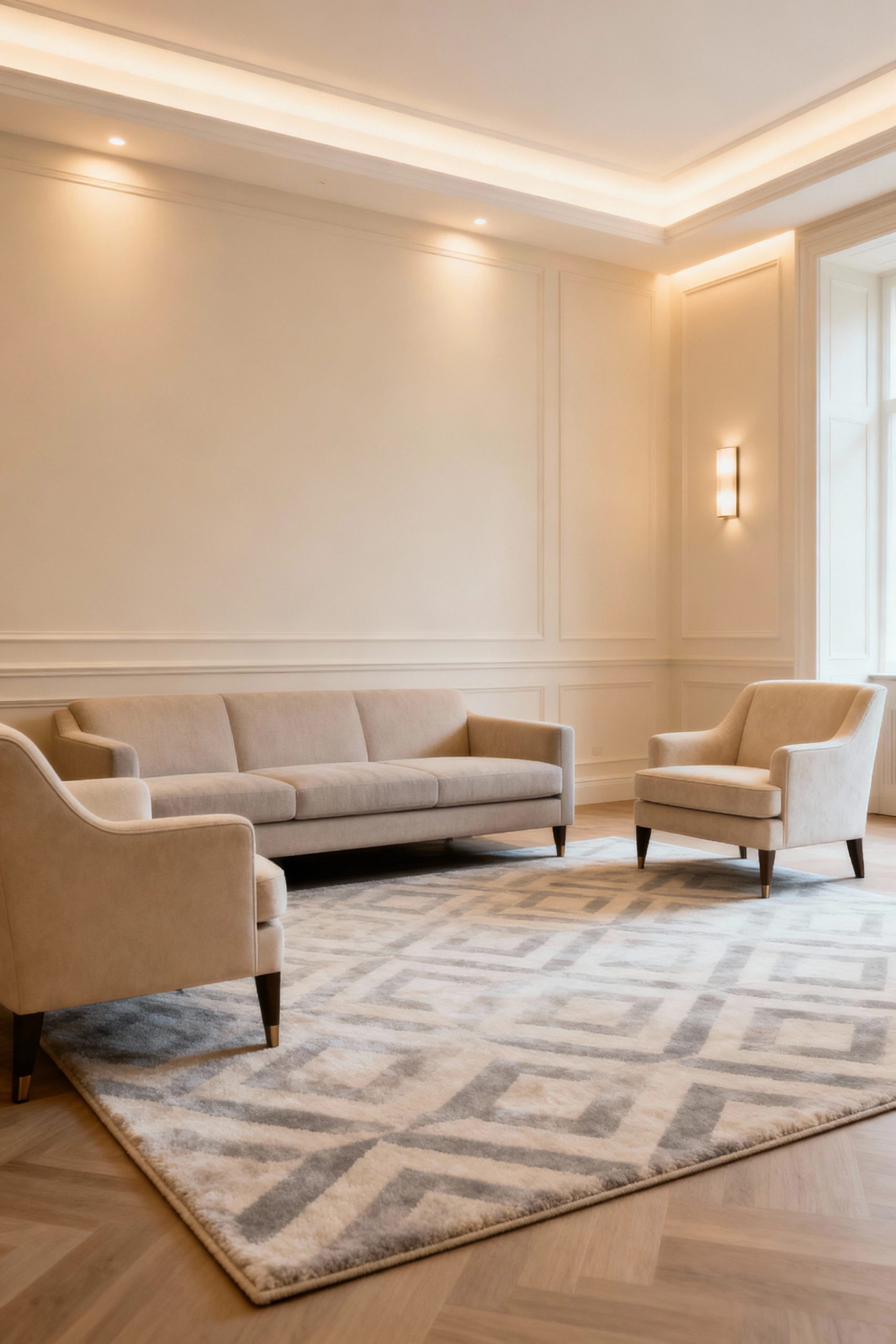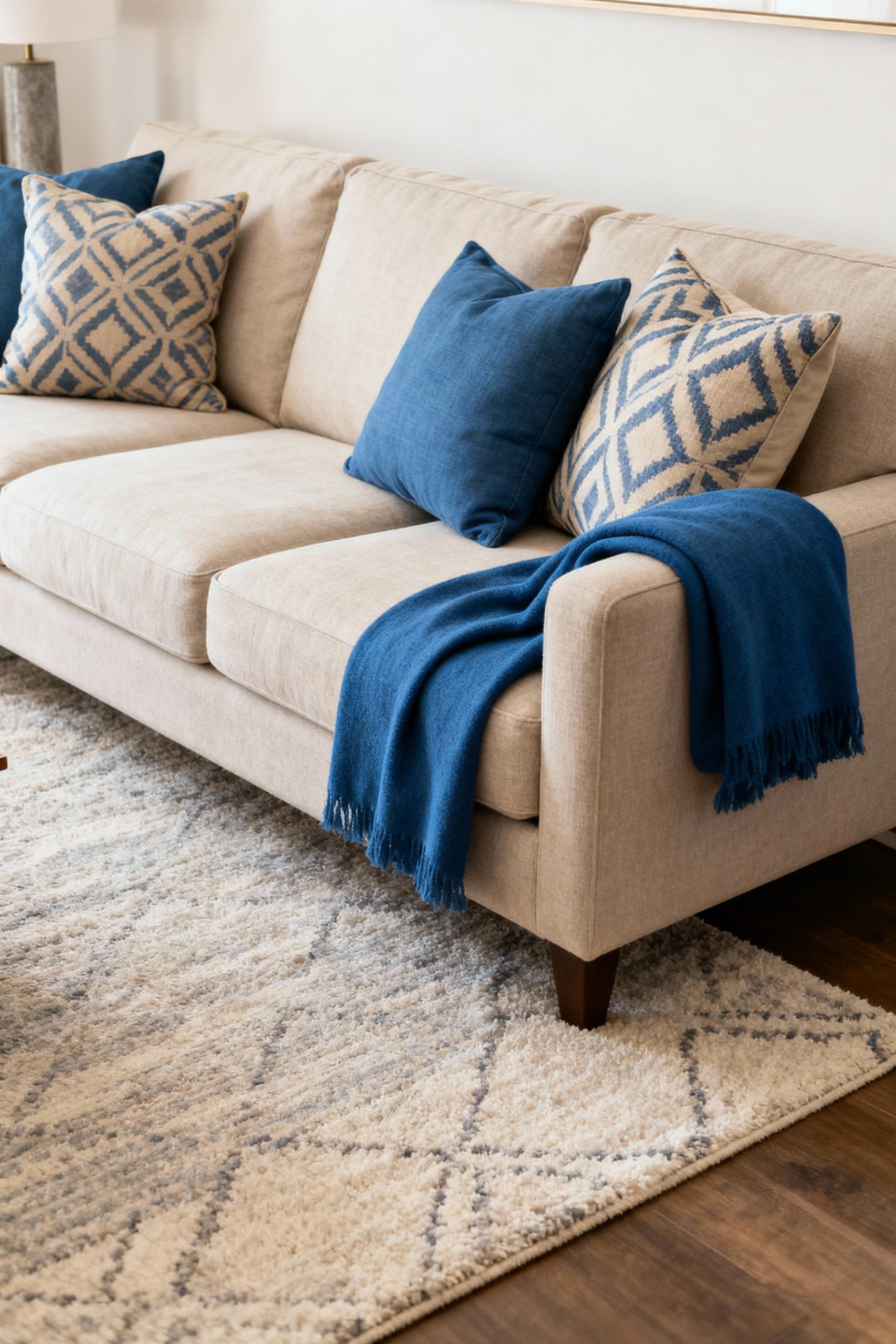If walls and furniture form the foundation of a room, textiles are what give it a heart and soul. They are the soft, comforting layers that transform a house into a home—the elements that invite you to come in, relax, and stay awhile. From the plush rug under your feet to the soft curtains that frame your window, textiles are a fundamental part of a warm and welcoming interior.
Incorporating them thoughtfully is one of the most effective ways to add personality, texture, and comfort to your space. But where do you begin? This guide will take you on a floor-to-ceiling journey, exploring all the ways you can use textiles to make every corner of your home feel more complete and thoughtfully styled.
The Foundation: Starting from the Floor
The largest textile in any room is almost always the rug, making it the perfect place to start. A rug does more than just feel nice underfoot; it’s a powerful design tool.
- It anchors furniture: In a living room, a rug should be large enough that at least the front legs of your sofa and chairs are sitting on it. This visually pulls the furniture together, preventing a “floating” look.
- It defines zones: In an open-plan space, a rug can clearly define the living area, dining zone, or a reading nook.
- It introduces color and pattern: A rug can be the inspiration for a room’s entire color palette.

The Comfort Layer: Sofas, Chairs, and Seating
This is where we add the layers that speak of comfort and invite relaxation. Think of your sofa as a canvas for pillows and throws.
- Throw Pillows: Don’t be afraid to mix and match! A combination of different sizes, shapes, and textures adds depth and interest. A good formula is to pair a solid color, a gentle pattern, and a highly textured pillow together.
- Throw Blankets: A beautifully draped throw blanket—whether it’s a chunky knit, a soft linen, or a warm wool—instantly makes a sofa or armchair look more inviting. It adds a casual, lived-in feel to the room.


The Artistic Touch: Textiles on the Walls
Textiles aren’t just for horizontal surfaces! Bringing them onto your walls is a wonderful way to add softness, absorb sound, and introduce a large-scale piece of art.
- Wall Hangings & Tapestries: As we’ve explored, a woven or macrame wall hanging can be a stunning focal point, especially on a large, empty wall above a sofa or in an entryway.
- Framed Fabric: Have a small piece of a beautiful, meaningful fabric (like a vintage scarf or a block-printed remnant)? Framing it is a simple and personal way to get custom art on a budget.


The Frame for Your View: Dressing the Windows
Window treatments are a non-negotiable textile element. The material you choose will dramatically affect the room’s atmosphere.
- Linen Curtains: Offer a light, airy, and relaxed feel. They filter sunlight beautifully without blocking it completely.
- Cotton or Velvet Drapes: Provide more substance and privacy. Velvet, in particular, adds a touch of luxury and is excellent for blocking light in bedrooms.
- Roman Shades: A fabric Roman shade offers a clean, tailored look that provides the softness of fabric with a more structured form.

Beyond the Obvious: Bedrooms and Kitchens
The principle of layering textiles applies to every room in the house.
The Restful Bedroom
Nowhere are textiles more important than in the bedroom. A well-layered bed is the key to a restful and inviting space. Start with your base sheets, add a duvet or quilt, fold a second blanket or coverlet at the foot of the bed, and finish with a mix of sleeping and decorative pillows.

The Welcoming Kitchen
Even a functional space like a kitchen can be softened with textiles.
- Table Linens: A simple table runner on your dining table or kitchen island adds a touch of color and texture.
- Hand Towels: A pretty set of cotton or linen hand towels is a small detail that makes a big difference.

Tips for a Cohesive Textile Palette How do you make sure all these different textiles work together?
- Stick to a Color Family: Choose a main neutral (like beige, grey, or white) and two to three accent colors. Use these colors repeatedly in different patterns and textures across the room.
- Vary the Scale: If your rug has a large, bold pattern, choose pillows and throws with smaller, more subtle patterns, and vice versa.
- Mix Textures: The key to a rich, layered look is combining different materials. Pair a smooth cotton with a rough jute, a soft velvet with a light linen, or a chunky wool with a fine weave.


By thoughtfully layering textiles from floor to ceiling, you’re not just decorating; you’re building a feeling. You’re composing a story of comfort, personality, and warmth that makes your house truly feel like home.


